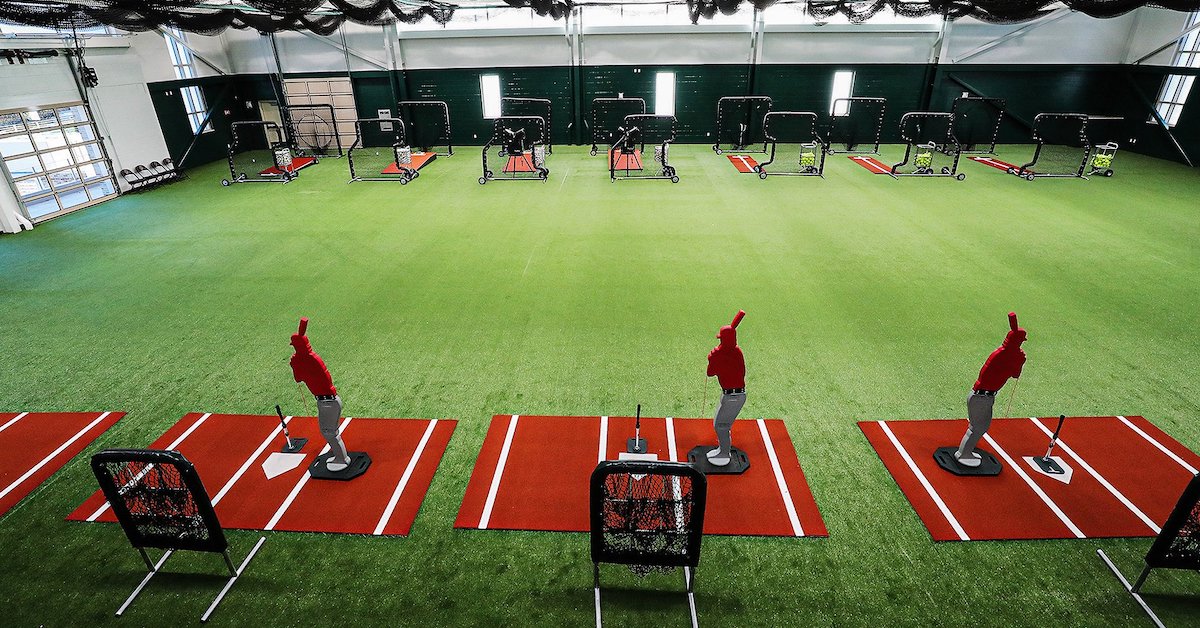
Courtesy of On Deck Sports
Last week, Andrew Golden of the Washington Post asked several Nationals pitchers where they focus their gaze as they prepare to pitch. They all seemed to have different answers. “When we go to the bullpen, that’s what we’re finding out,” said Robert Garcia. “It changes every pitch,” said MacKenzie Gore. I’ve been thinking a lot lately about where a person directs their attention, about how much control they really have over it, about things seen and unseen. That’s because for the past few months, something has been slowly creeping both into my field of view and into my consciousness.
During spring training, as I watched footage of pitchers and catchers working out, there was often something lurking off in the periphery. Although it was brightly colored, it didn’t draw attention to itself. It didn’t move at all. But once I started seeing it, I couldn’t unsee it. I couldn’t help looking for it, scrolling through the social media feeds of beat writers for evidence. Here’s a picture Newsday’s Tim Healy took a few weeks ago. Adrian Houser is pitching, and J.D. Martinez is standing in the batter’s box watching pitches. But someone else is lurking behind J.D. Martinez, watching him.
That’s the Designated Hitter. It’s a dummy shaped like a batter. The idea is to set it up in the batter’s box so that pitchers can simulate facing an actual batter. The cord dangling from its elbow is intended to give pitchers a frame of reference for pitching inside. It turns out that just about the entire league uses it. I wasn’t trying to catalog every single team, but even so, I found Designated Hitters in the bullpens of the Astros, Brewers, Cardinals, Dodgers, Mariners, Marlins, Mets, Red Sox, Tigers, Twins, White Sox, and Yankees. Back in 2022, James Fegan captured video of multiple White Sox pitchers using the DH during side sessions.
It’s not just the majors, either. The Designated Hitter has permeated every level of the sport. It’s especially prominent at training facilities. If you’re a pitching nerd who pays attention to what’s going on at Tread or Driveline, you’ve almost certainly seen it in use. On particularly fun occasions, you’ll see it in use by way of high-speed cameras as MLB pitchers work on their repertoires. Chris Langin, Driveline’s Director of Pitching, published the clips below on Twitter (and graciously granted me permission to compile them in the video below).
Colby Morris has pitched in the minors and interned at Driveline, and he’s now an associate pitching analyst in the Giants system. Understandably, he can’t talk about the specific training methods the Giants use, but he’s a big fan of the Designated Hitter. “My personal philosophical opinion is pitchers should throw almost every pitch with one,” he told me. “I loved using it while playing to hold myself accountable and gain confidence throwing inside to hitters.”
The Designated Hitter is even more popular at the amateur level, especially college. In the pros, it’s somewhat rare to see one in action. Coaches or teammates will often stand in, whereas the dummy is saved for more specific exercises. College baseball and softball programs use it constantly. Some softball programs have taken to marking them up with red, yellow, and green tape, like a traffic light. The green goes at the chest and the knees, where you want to locate a pitch. The red goes thigh-high, where you very definitely don’t. College teams also have entirely too much fun with the dummy; I’ve seen players running relay races with it, using it as an air guitar, and even holding wedding ceremonies with it. Several have named theirs.
You may have noticed that aside from the colors, every one of these dummies is exactly the same. They all have the same upright, but somehow still hunched-over batting stance. The Designated Hitter is the only game in town. I decided to find out where it came from and how it seemingly found its way into the bullpens of America. I also decided to answer other important questions, such as which current MLB player has the most similar stance to the Designated Hitter. Although there were many contenders, Oakland’s Lawrence Butler is the winner. All the dummy needs is a longer bat and an oven mitt in its back pocket.

Joe Murphy, a former catcher at the University of Rhode Island, started ProMounds in 2001. Murphy was a high school teacher and baseball coach in Massachusetts, and he wanted his pitchers to be able to throw off a real mound at the beginning of the season, when the cold weather forced them to practice indoors. He invented a portable, lightweight mound made of turf-covered foam, and it turned into a business when his fellow coaches started asking if they could buy their own. Murphy enlisted his parents and fellow teachers as the company started growing. The name changed to On Deck Sports when he started branching out into other kinds of field equipment and training aids. Eventually, it became Murphy’s full-time job, and On Deck started fitting out entire baseball and softball facilities.
Although On Deck Sports owns the Designated Hitter, it didn’t create it. Murphy first encountered it at a trade show, and bought it in 2010. Trade shows are the way to get your product in front of coaches who might be interested in buying them, but they can also be expensive and difficult to navigate. When Murphy started making mounds, he learned that if you’re only selling one product, even one that sells well, it’s hard to make the numbers work. “It costs quite a bit just to mobilize and travel the trade show space,” he said. “When you have one product it can be really difficult. When I met Jim, it was getting to that point for him.”
Jim Haller was a fireballing right-hander out of Creighton Prep in Omaha. The Dodgers took him ninth overall in the 1970 draft, but injuries derailed his career, starting with a collision at first base during fall instructs. In 1971, playing for Double-A Albuquerque, he got hit in the jaw by a ball during batting practice. On August 4 of that year, he threw 14 scoreless innings against Dallas Fort-Worth. He ended up with a no-decision thanks to future big-leaguer Tom Walker, who beat Albuquerque 1-0 with a 15-inning no-hitter. “My arm never recovered after that,” Haller told me. “My arm was dead. Nowadays, can you imagine a first-round draft pick going six innings?”
On September 25, 1974, Dr. Frank Jobe performed the first ever UCL reconstruction surgery on Tommy John. Earlier that morning, he operated on Haller, cleaning up his elbow and performing an ulnar nerve transposition surgery. “I gave him hell,” Haller joked. “I said, ‘I think you took something out of my arm and gave it to Tommy.’” Jim pitched through the 1975 season, but never made it past Triple-A. “When the Dodgers sent me down the road, there was good reason,” he said. “I couldn’t get anybody out.” The numbers tell a more complicated tale. He always walked a lot of batters, but over two seasons and 52 starts in Triple-A, Haller ran a 2.90 ERA. He eventually went into manufacturing, but stayed around the game. In the early 2000s, he was coaching for the independent Lincoln Saltdogs when he and his business partner, Steve Zawrotny, came up with the idea for the Designated Hitter together.
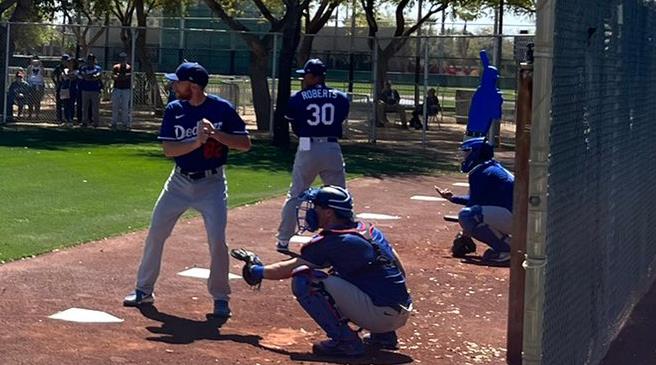
Courtesy of Chelsea Janes.
Murphy connected me with Haller, saying, “He tells a great story.” He wasn’t wrong. Haller is retired now, living 30 miles outside Omaha in a town of 80 people. He still trains pitchers, but only if he thinks they have a real shot. Our first conversation took place while Haller was driving to pick up a dresser, and he was incredibly engaging, launching into the story of the Designated Hitter the moment we finished saying hello. I was dealing with bronchitis at the time, so the conversation followed a halting roundabout: I would ask a question, Haller would answer with a story. Eventually he’d make a joke, and I would start laughing, only to end up dissolving into a coughing fit. Then I’d apologize, he would say not to worry about it, and I’d ask another question.
Said Haller, “I don’t know if Steve said or I said, ‘Wouldn’t it be nice if we had a hitter up there?’ But you can’t just put a hitter in pads and let him take shots.” It’s not hard to see why the idea struck them as a good one. As Murphy said, “When was the last time you pitched a game and no batter stood in? So why would you practice without it?” I told Haller that the DH would have solved one problem I had when I was younger: I never saw enough left-handed batters to feel comfortable pitching against them. He brought up a similar concern. “There’s guys that throw a breaking ball right at a hitter. Well, where do you aim a breaking ball if there’s no batter there?”
Zawrotny was also a pitcher, and he has been running a strength and conditioning company for baseball and softball players for over 20 years. Although he and Haller didn’t know it when they started working on the idea, there were already two similar products on the market. Luckily for them, both had serious design flaws. The first was called the Pitcher’s Pal. It was essentially a crash test dummy holding a bat, and while it was used by at least one MLB pitching coach, it never caught on. Murphy recalled that it was “very oversized and awkward,” but I wasn’t able to find any real information about it. I found much more information about a different Pitcher’s Pal, which was designed to help people who play horseshoes. It was basically a tire iron with a handle.
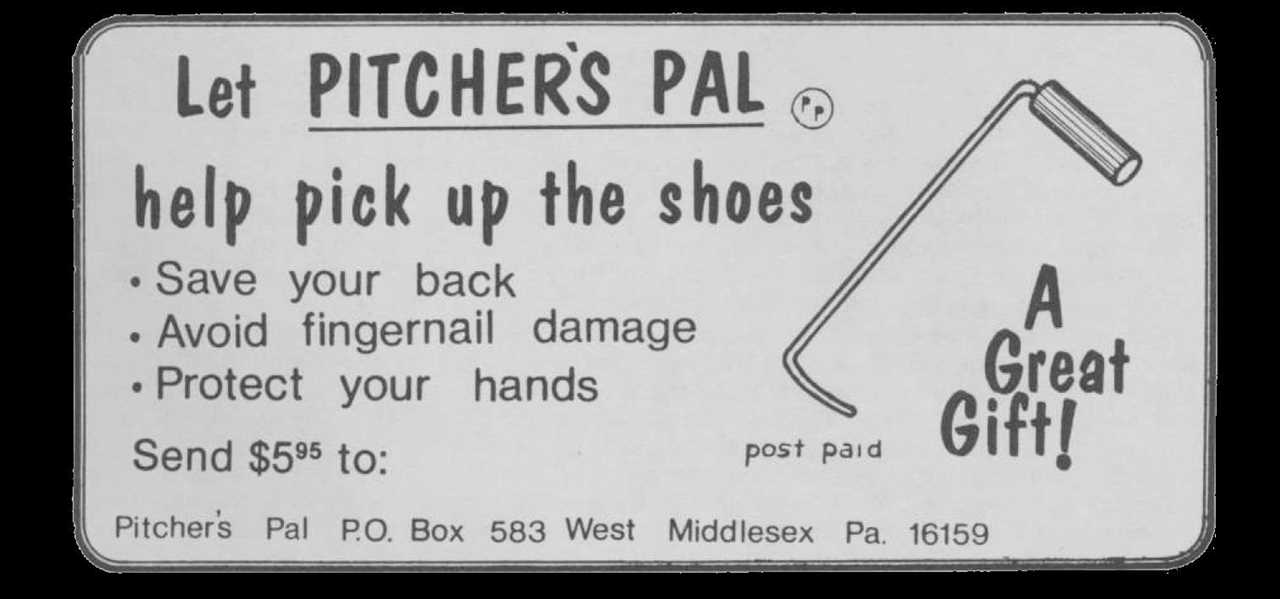
The second competitor was the Bullpen Buddy, an absolutely hilarious inflatable batter licensed by MLB. The Bullpen Buddy needed to have its feet filled with sand in order to stand up. To make it a switch-hitter, it featured a fascinating here’s-the-church, here’s-the-steeple grip on the bat, along with a removable head that mostly just wobbled around crazily. Also, the air valve was located on the back of its upper thigh, which meant that in order to blow it up you more or less had to press your face directly into its butt. On the positive side, it bore an uncanny resemblance to Anthony Rizzo.
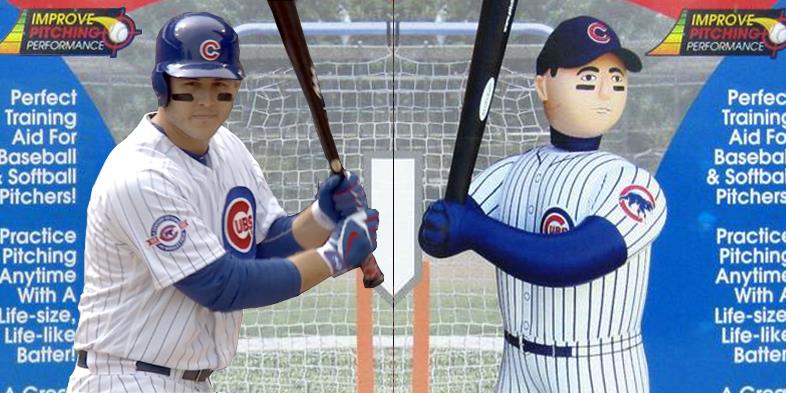
Unlike Rizzo, however, the Bullpen Buddy wasn’t great at getting hit by pitches. It had a tendency to tip over, and the soft plastic was prone to bursting on impact. It doesn’t take a sports psychologist to realize that if you’re trying to instill confidence in a young pitcher who’s struggling with poor control, you probably shouldn’t make them throw to a batter who might, when hit with a wayward pitch, literally explode.
Haller and Zawrotny worked out the general idea for the design over texts and emails, and filed for a patent in February 2007. The Designated Hitter came in three sizes, for players of different ages. The final shape wasn’t drawn. Haller knew a player on the University of Nebraska baseball team and asked him to pose while the team was in Omaha for the College World Series. “I’ve got a buddy in Omaha that’s kind of a wizard with computers and photography,” he said. “We shined a light on [the player], and we had a shadow on the wall and we took a picture of that.”
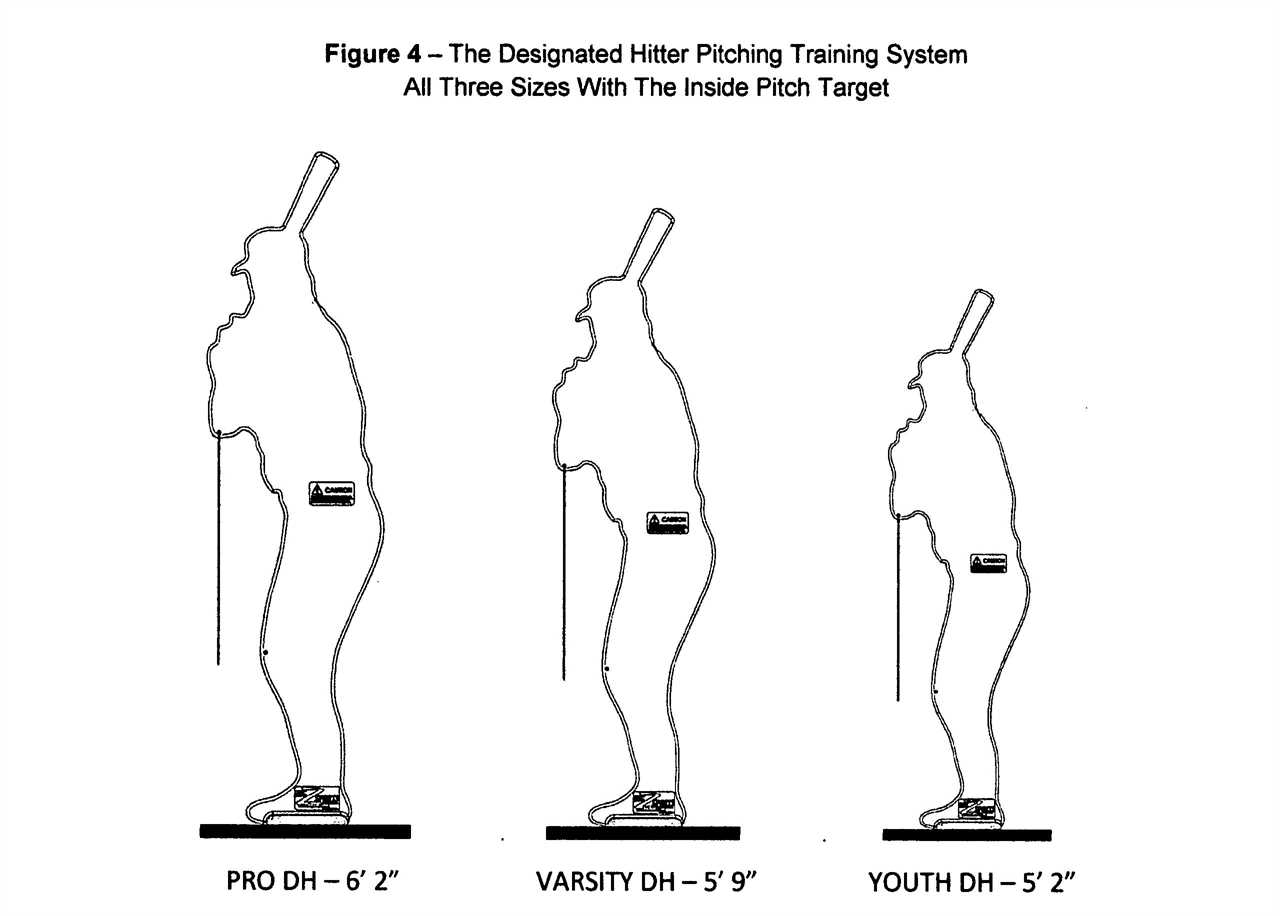
Once they’d crafted the final design, Haller paid $20,000 to have a mold created. The DH is made of rotationally molded thermoplastic, so it’s hollow inside and weighs only seven pounds. It then gets bolted onto a base made of recycled rubber, the same kind you’d find on the bottom of an orange traffic delineator. That’s not an accident. “I used to steal those bases. I took those off the highway for about three months,” Haller said. “At construction sites, they would put traffic cones in those so they wouldn’t blow over, so then I tracked down the company that made them in California.”
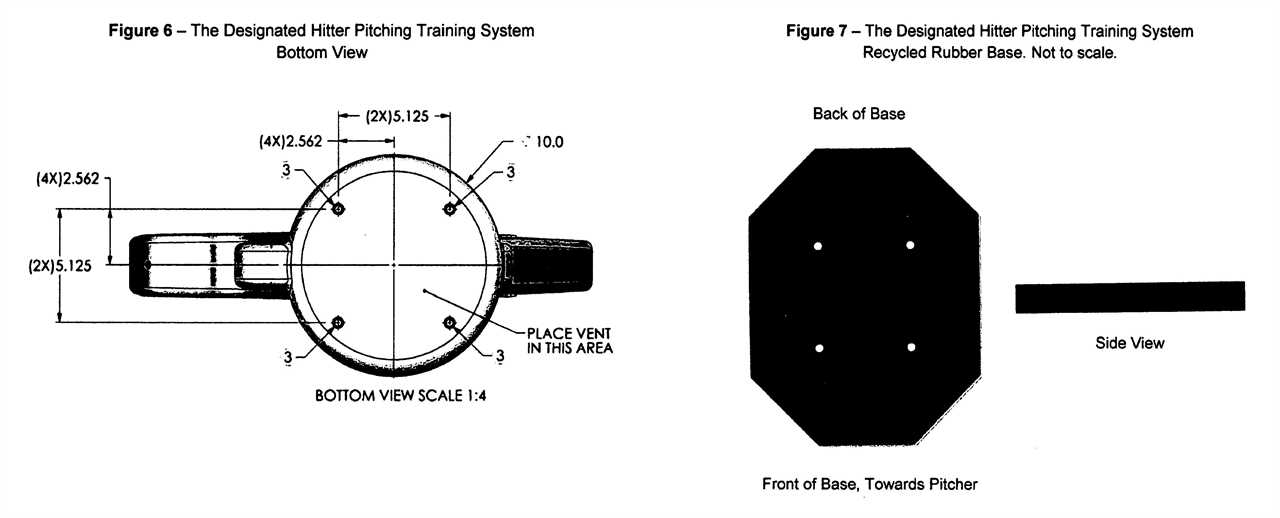
Haller and Zawrotny got the first DH molded by a company in Iowa, bolted it onto one of the purloined bases, and brought it to work to test it. That is, Haller asked his pupils to throw at it as hard as they possibly could. “And it just worked spectacularly,” he said. “We had guys that threw hard. I would keep a pocket full of hundred-dollar bills, and I would say, ‘I’ll give you a hundred dollars if you can break it. I’ll give you a hundred dollars if you can knock it over.’” At first, the pitchers were throwing from the rubber, the full 60 feet, 6 inches away. When it turned out that the DH wouldn’t so much as budge, he let them start moving closer. “So I had guys standing five, 10 feet away from this thing, and you just couldn’t break it. We even had them do it with softballs too because of the bigger mass.” Take a moment to picture the scene: Haller with a sheaf of hundred-dollar bills in his pocket, a gaggle of pitchers buzzing around in front of a two-dimensional batter, waiting their turn to take a running start and fire a softball at its center of mass from point blank range. One by one, they muscle up and unload, only for the ball to fall harmlessly to the ground. One by one, they’re defeated by seven pounds of plastic.
In the years that Haller sold the DH, he could only recall one that broke, due to a defect. He and Zawrotny were also pleased to find that, as intended, the design’s flat shape and square corners minimized deflections that could injure a catcher, a concern that plagued the Pitcher’s Pal.
With the product proven, they got to work. Zawrotny was in Oklahoma, focusing more on marketing, while Haller was in Nebraska, assembling and shipping the DHs. They both visited trade shows to demonstrate it to coaches. Early on, pitching guru Tom House told Haller that the DH was worthless. His research indicated that pitchers don’t even see the batter while they’re pitching. The slight still rankles Haller, but the DH took off quickly. “Our original purchasers were high schools, local high schools here in the Omaha area. And Omaha, we’re a baseball area. The College World Series kind of makes us a baseball town. Steve went to trade shows in Texas and sold a bunch, but it was primarily high schools, and then the colleges caught on. And then I think we gave one to some big league club for spring training, and that took a while to catch on. But I honestly think players were demanding them, and that probably helped the sales.”
Haller remembered one player in particular who loved the Designated Hitter early on, although he couldn’t come up with the player’s name. The player spent most of his career with the Cardinals, and then bounced from team to team for a few years. Each time, he’d make sure the new team’s bullpen had a DH. After struggling for another minute or two, Haller gave up on trying to remember the name, but an hour or two after we hung up, he called me back and shouted, “Isringhausen!” I laughed, then coughed.
Eventually, the demand became too much for Haller and Zawrotny, who were both coaching and training while managing the Designated Hitter. They sold it to On Deck in 2010. “When Murphy came to us and was interested in buying the entire product, Steve and I thought, This is too big for us. We’re not going to get the job done. So we sold it to Joe. I’m happy for him.” Haller is proud of what they accomplished: “I’ll look at somebody I respect in the big leagues, somebody’s mechanics I respect, and you’ll see the thing standing there.” However, that doesn’t mean he has no regrets about letting the DH go. “Steve and I, we came up with a winner,” he said. “I wish we could’ve cashed in on it.” They have since come up with other ideas, but nothing they’ve believed in strongly enough to pursue.
On Deck now manufactures the Designated Hitter at a factory in Georgia. The company adjusted the mold so that it comes in two pieces, bolting together at the hitter’s waist, which makes it easier to ship and transport. That’s the only significant change it made, and the DH is still more or less indestructible. “The breakage and the quality control around it,” Murphy said, “it’s so fractional that it’s not even measurable.” When I asked how many Designated Hitters were in bullpens across the country, he estimated that the number was in the tens of thousands.
When I asked Haller if there was anything he wishes he could go back and change about the product, he already had an answer ready: the name. “We thought we were clever as hell calling it the Designated Hitter,” he said. But they realized that the name made it sound like the opposite of what it was: a device to help hitters rather than pitchers. “It was too late, we had money sunk into it,” he said “And that wasn’t Steve’s fault. It was my fault.”
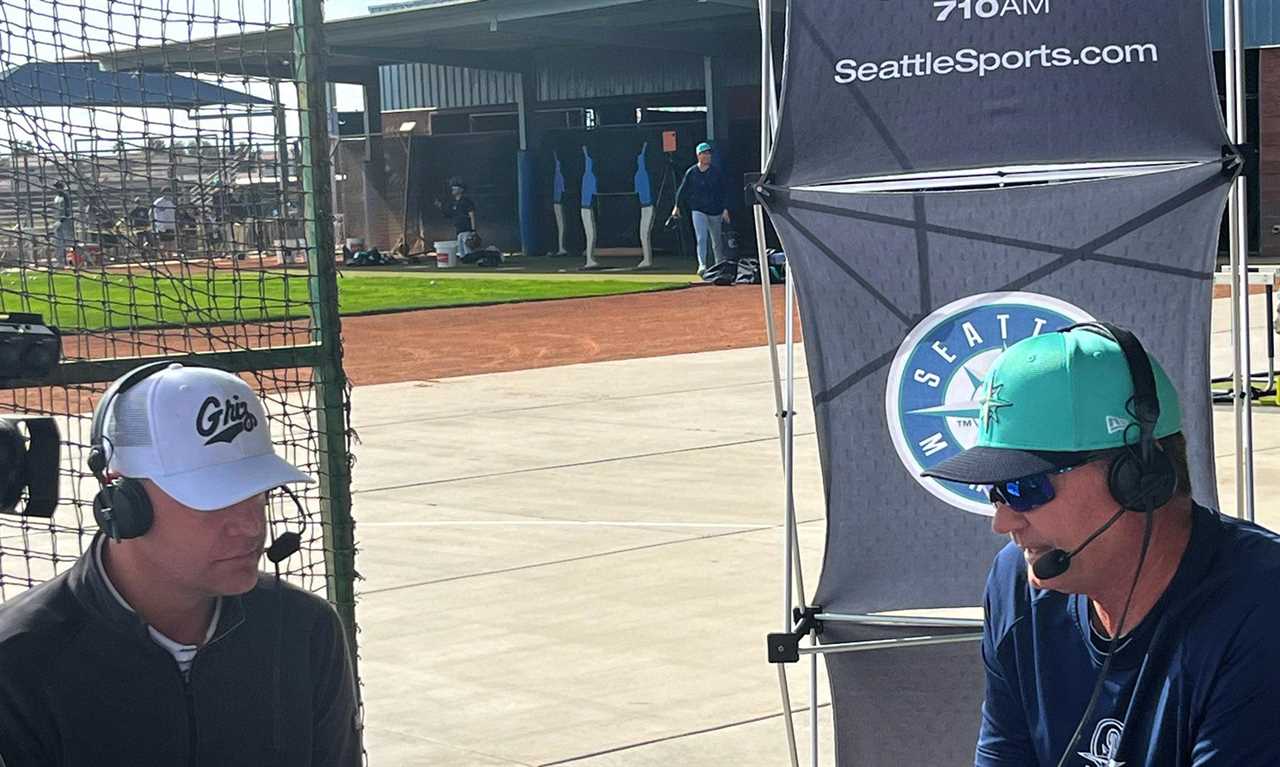
Courtesy of Ryan Divish.
There’s no getting around the fact that the Designated Hitter is, in some ways, a deeply silly product. It’s not as silly as a decapitatable Anthony Rizzo, but there’s always going to be something funny about an indestructible two-dimensional batter. Sometimes the simplest solution to a problem is elegant, the single stroke that clears everything extraneous away. And sometimes the simplest solution strips the problem down to its essence, laying bare the absurdity of the entire exercise. The faceless, depth-less DH is somewhere in between, using the absolute minimum information possible to convey the idea of a batter. It’s not so much a designated hitter as a deconstructed hitter. The first time you notice it, you’re bound to think of Ricky Vaughn taking a dummy’s head clear off with an errant fastball in Major League. All the same, I was moved to hear the passion with which Murphy and Haller talked about it. The idea had been around for a long time; it was just waiting for people who cared enough to get it right. “I don’t know, man,” Haller said. “I’m not that smart, but we fell into one.”
Although I’ve focused on usage across Major League Baseball, that was never intended to be the main market for the Designated Hitter. From the very beginning, Haller and Zawrotny saw it as a teaching tool for young players. “Youth pitchers, they hit a kid, and they might not want to pitch anymore,” Haller said. “When you’re 10, 11 years old and you’ve got a guy hitting you, a lot of kids get scared to death and it ruins their whole baseball experience.” Haller is still very much a coach at heart, and he told me enthusiastically about the two pitchers in high school he’s currently training. Though he’s still a board member, Murphy recently sold the majority of On Deck Sports and went back to coaching. “We use it in our bullpen every day,” he said.
Speaking with Haller, it’s not hard to see how his own experiences as a pitcher led him to value the idea of a tool for practicing command and learning to pitch inside without fear of hitting a batter. Later in our conversation, I started asking him about his own experiences. When I told him I’d read that he once struck out Hall of Famer Dave Winfield four times in a row in an American Legion game, he joked, “I was so damn wild he just wanted to get the hell out of there.” He came back to that idea several times. “I didn’t know how to pitch,” he said. “I threw hard. I’m 6’6”, 225; I threw hard as hell. I’m there in Vero Beach, I’m around Don Sutton and Tommy John and Andy Messersmith, and they’re throwing seven, eight miles per hour less than me.” The Designated Hitter was created for kids like him, along with the kids who have to stand in against them. “These guys on little league teams are just bigger than their peers, so they don’t really learn the finer skills,” he said. “I felt bad for these kids. I was six feet tall in little league. Can you imagine these kids facing me?”
Source
https://blogs.fangraphs.com/the-deconstructed-hitter/
 Backyard GrillingWeekend WarriorsAdvice from DadBeard GroomingTV Shows for Guys4x4 Off-Road CarsMens FashionSports NewsAncient Archeology World NewsPrivacy PolicyTerms And Conditions
Backyard GrillingWeekend WarriorsAdvice from DadBeard GroomingTV Shows for Guys4x4 Off-Road CarsMens FashionSports NewsAncient Archeology World NewsPrivacy PolicyTerms And Conditions
